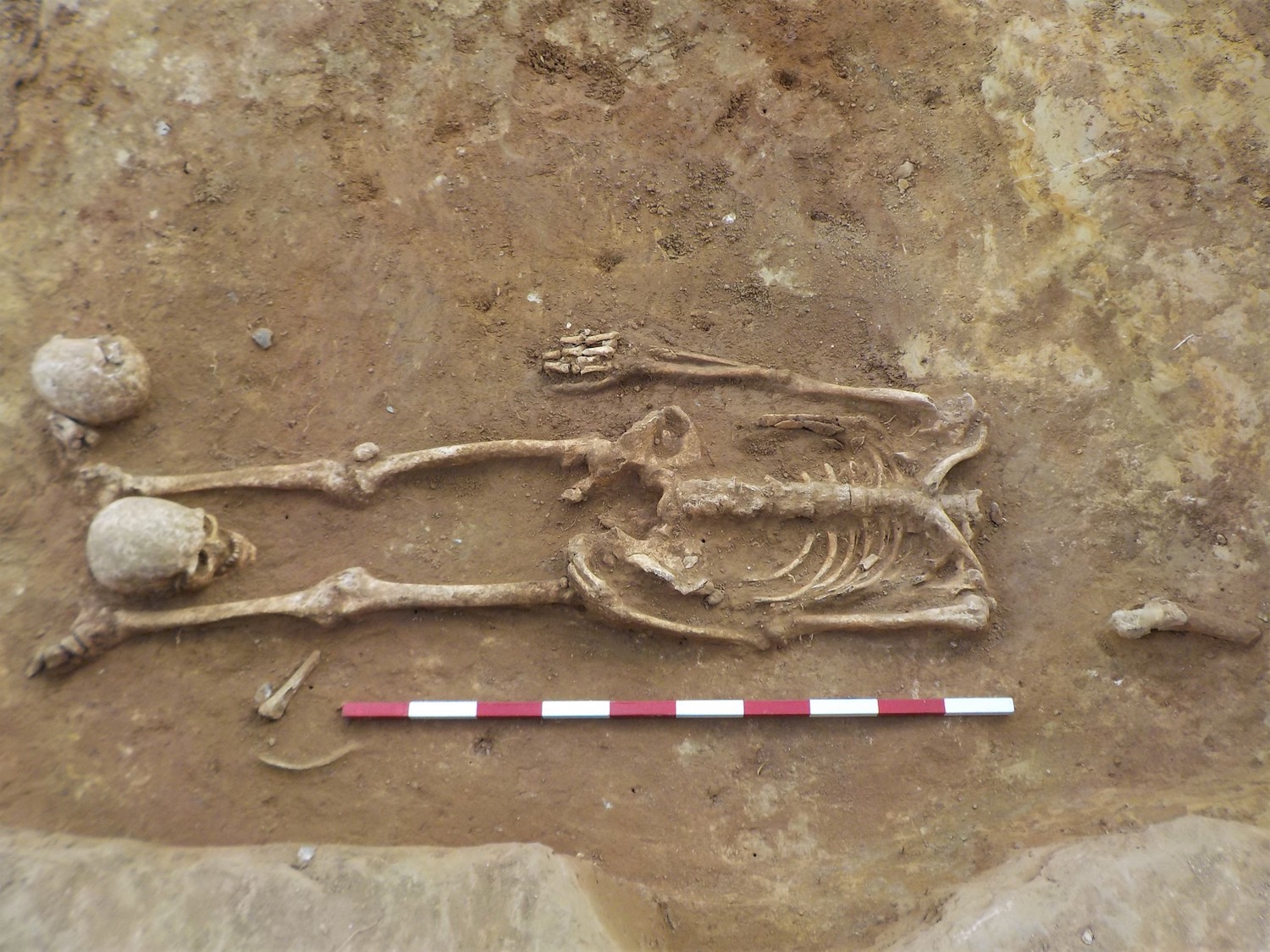Decapitated Skeletons, with Heads Between Their Legs, Unearthed in Roman Cemetery
The discovery of a Roman cemetery in England has archaeologists scratching their heads, mainly because about 40 percent of the bodies buried there are missing theirs.
Well, not missing, exactly. Of the 52 skeletons discovered in the fourth-century A.D. cemetery, 17 had been decapitated. And almost every head was resting between its owner's legs or feet.
It's unclear why these decapitations happened, but "this appears to be a careful funeral rite that may be associated with a particular group within the local population," Andy Peachey, an archaeologist with Archaeological Solutions, the company responsible for excavating the cemetery, told Live Science. [See Photos of the Decapitated Skeletons Buried in the Roman Cemetery]
Archaeologists discovered the mysterious cemetery while surveying the village of Great Whelnetham in Suffolk, England, ahead of the construction of a housing development. It wasn't a complete surprise that Roman remains were found there. Since 1964, archaeologists have known that a Roman settlement existed in the area, because researchers had uncovered Roman artifacts such as a pottery kiln, coins, cremations and burials.
Even so, the archaeologists involved in the recent excavation were surprised to discover that so many of the deceased had been decapitated, Peachey said. An analysis of the skeletons revealed that these head choppings happened postmortem, he noted.
"The incisions through the neck were postmortem and were neatly placed just behind the jaw," Peachey said. "An execution would cut lower through the neck and with violent force, and this is not present anywhere."
It's not uncommon for Roman cemeteries to have a number of so-called "deviant" burials. But this cemetery has more than its fair share, the archaeologists said. Of the 52 burials, only 17 were buried in the standard "supine" position, or lying on his or her back. The other 60 percent were buried face down, in a crouched position, or on their backs with their decapitated heads between their legs or feet. In addition, four of the decapitated skulls were next to skeletons that they didn't belong to, the archaeologists said.
Get the world’s most fascinating discoveries delivered straight to your inbox.
It's possible that these decapitations were a practice belonging to a cult or a group that moved into the area, Peachey said. Perhaps the technique came from "a labor force or even slaves from an estate elsewhere in the Roman empire," he said.
The decapitations might be related to pagan belief systems that held that spirits need to be released for the afterlife or even that the head was a container of the soul, a practice seen in pre-Roman Celtic tribes, the archaeologists said.
Except for two decorative Roman bone combs, none of the graves had any artifacts that could indicate what sort of social position the deceased held while they were alive.
Besides these deviant burials, the cemetery was quite ordinary. For example, it was discovered outside of the Roman settlement, which was typical of Roman people, who often buried the dead away from their dwellings. What's more, the burials held a mix of men, women and children, which likely reflected the demography of the settlement, the archaeologists said. [In Photos: A Gladiator Burial Pit]
"They were well-nourished, and several had very robust upper arms [and] bodies consistent with a working agricultural population," Peachey said.
However, an analysis of the deceased's teeth revealed that diets full of natural sugars and carbohydrates led to poor dental health. Many of the individuals were missing teeth and had dental abscesses. Moreover, several of the individuals carried tuberculosis, which was common in rural farming communities, Peachey said.
The archaeologists also discovered a large ditch in the area chock-full of Roman artifacts, including several glossy red Samian dishes imported from Gaul and color-coated beakers decorated with running stags.
- Photos: 2,000-Year-Old Roman Road and Coins Discovered in Israel
- In Photos: Ancient Home and Barracks of Roman Military Officer
- Photos: Gladiators of the Roman Empire
Originally published on Live Science.

Laura is the managing editor at Live Science. She also runs the archaeology section and the Life's Little Mysteries series. Her work has appeared in The New York Times, Scholastic, Popular Science and Spectrum, a site on autism research. She has won multiple awards from the Society of Professional Journalists and the Washington Newspaper Publishers Association for her reporting at a weekly newspaper near Seattle. Laura holds a bachelor's degree in English literature and psychology from Washington University in St. Louis and a master's degree in science writing from NYU.



